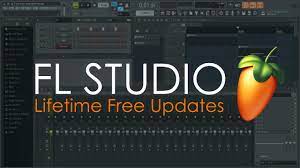
These are also known as lightpipe cables. When it comes to cables, in a general sense, a connection between studio monitors and audio interfaces is done using optical cables. Thus, you must have high-quality cables with appropriate jacks and connect it to the proper slot or hole in the audio interface.

How to Connect Studio Monitors to Audio Interfaces: Materials Neededīefore you would understand how to connect studio monitors to audio interfaces, you should have the right tools to use in order to accomplish such. It acts as an external sound card of the computer and can be connected using a USB or a PCMCIA, depending on the available port available and preferred. The audio interface also provides a more accurate and raw sound. It also has a lot of slots that allows a number of other sound input equipment like microphones and musical instruments, as well as output equipment such as headphones and studio monitors, to be connected to the computer.Īside from the additional input and output capabilities it provides the computer, it also improves the quality of sound that gets into the computer and to the software that records and mixes the sound. The Audio Interface?Īn audio interface is an equipment or hardware that allows the computer to have more sonic capabilities. With the more natural sound emitted by these speakers, they are what the producers rely on when they need to make critical decisions during the final mixing stage. They provide raw and unadulterated sounds to produce better quality output during the mixing stage. These are special speakers also referred to as near-field monitors and they do not have tonal enhancements in terms of frequency and amplitude like commercially-sold speakers.

Studio monitors are not simply loudspeakers. This is especially true when the studio monitors are connected to the audio interface really well. Studio monitors allow the technicians to judge the sounds more objectively.

However, studio monitors are still preferred because they provide more “uncolored” sound because of their “flatter” response to frequency. That is because there are a lot of things to consider when setting up studio monitors aside from deciding which cable and connectors to use.

In addition, using studio monitors involve a more complicated set up than simply using headphones. Headphones are definitely less costly than studio monitors. The sound being produced and recorded in the studio can be monitored using either a headphone or a studio monitor.


 0 kommentar(er)
0 kommentar(er)
